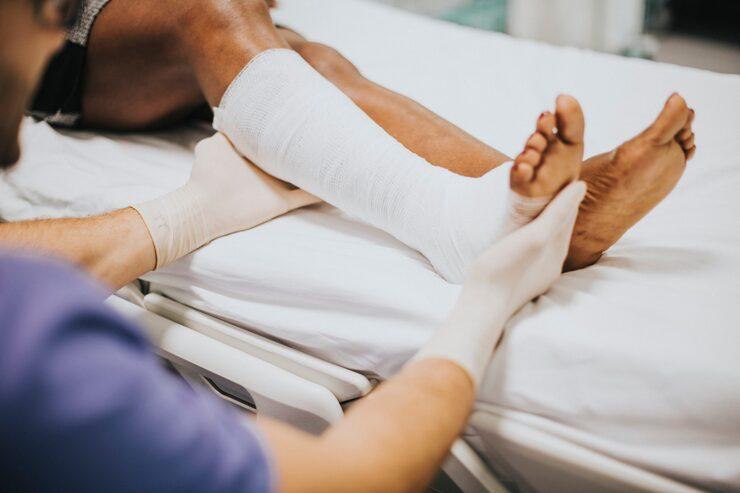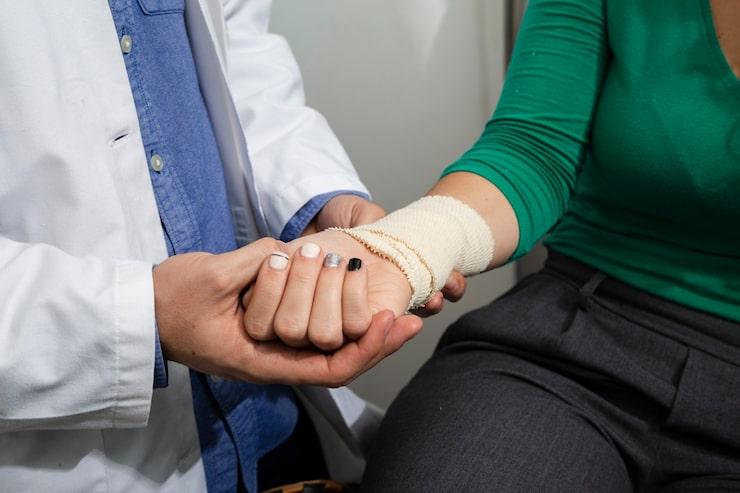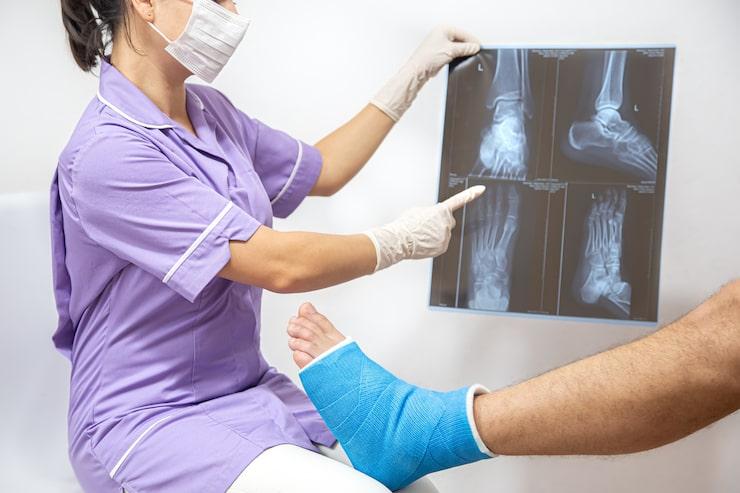
person with an avulsion fracture
Fractures are one of the most common types of bone fractures, but they don't all happen in the same way. An avulsion fracture is a form of fracture that arises when a tendon or ligament pulls a small piece of bone away from the main bone. This may seem like a small thing, but avulsion fractures can cause a lot of discomfort, swelling, and loss of movement, especially when they happen near joints.
Most avulsion fractures heal fully without any long-term problems if they are diagnosed and treated quickly. This blog will talk about avulsion fractures, what they are, what causes them, how to tell if you have one, and the best ways to treat them.
An avulsion fracture happens when a tendon or ligament, which connects muscles to bones and bones to each other, tears a small piece of bone off where it is attached.
This usually happens when the soft tissue is stretched too far by a quick, strong movement. The piece of bone is "avulsed," which means it is ripped away from the main bone mass.
Avulsion fractures can happen anywhere in the body, although they are most likely to happen in places where muscles or tendons are under a lot of stress, like:
Anyone can get avulsion fractures; however, some groups are more likely to get them:
The main reason is sudden, too much strain on a tendon or ligament. Some such situations are:

doctor treating person with avulsion fracture
The symptoms of an avulsion fracture might change depending on which bone is broken and how badly the damage is. But common signs are:
Your doctor will do a full physical exam and suggest imaging testing to confirm an avulsion fracture.
1. A physical exam and a medical history
The doctor will want to know how you got hurt, what symptoms you had, and if you heard a "pop" or felt a sharp pull. A physical assessment might assist in finding areas of pain, edema, and limited movement.
2. Tests that use images
X-rays: The main way to find broken bones and see how far they have moved.
MRI (Magnetic Resonance Imaging): Gives clear pictures of soft tissues, tendons, and ligaments. This is helpful when the fracture is minor or close to a joint.
CT Scan: Helps figure out how bad a fracture is and what kind of surgery could be needed.
The location, severity, and amount of bone displacement all affect how the injury is treated. Most of the time, conservative (non-surgical) care works well. But in more serious cases, surgery may be needed to fix the problem.
1. Non-Surgical (Conservative) Treatment
Minor avulsion fractures, in which the bone fragment stays close to its original place, can heal with rest and the right care.
Rest and not moving:
To keep the damaged area from moving, you can use a cast, splint, or brace.
Patients are told not to do activities that put weight on their bodies until they start to recuperate.
Ice Therapy:
Using cold packs for the first few days can help with pain and swelling.
Height:
Keeping the hurt limb up lowers swelling and gets circulation flowing.
Pain Relief:
Pain relievers and anti-inflammatory medicines that you may get without a prescription, such as ibuprofen, can assist with pain.
Physical therapy:
Gentle stretching and exercises can help you get your flexibility, strength, and range of motion back once the discomfort and swelling go down.
It's important to slowly get back to your normal activities to avoid being hurt again.
The time it takes for mild avulsion fractures to heal is usually between 4 and 8 weeks, depending on the bone that was broken and the person's overall condition.
2. Surgery

doctor explaining the injury to the patient
The amount of time it takes to heal depends on where the fracture is and what kind of therapy you get. It may take 6 to 10 weeks for a simple fracture to heal completely. For more serious injuries or surgeries, it may take several months.
Some of the purposes of rehabilitation are:
Only until your doctor certifies that you are completely healed by follow-up X-rays or MRIs should you slowly start playing sports or doing hard work again.
Avulsion fractures normally heal successfully if they are treated right away. But if you don't take care of it properly, problems can happen, like delayed bone healing or non-union.
Even if you can't always avoid accidents, there are several things you can do to minimize your risk of avulsion fractures:
If you have any of the following, get medical help right away:
Early diagnosis not only speeds up rehabilitation, but it also stops long-term problems with the joints.
Avulsion fractures can be quite painful and make it hard to move if they aren't treated. The good news is that most people get better and can go back to doing their normal things after getting the right diagnosis, treatment, and rehabilitation.
Our orthopedic doctors, sports medicine experts, and physiotherapists work together at Prakash Hospital to give full care for all kinds of fractures, from small ones to more complicated bone problems. We make sure that every patient gets stronger, more mobile, and more confident through modern imaging, tailored treatment programs, and supervised rehabilitation.
If you suddenly get joint discomfort or think you could have a fracture, go to Prakash Hospital right away for an evaluation and specialist care. Taking care of yourself early on can make a big difference in how quickly you heal.
We offer expert care across key specialties, including Medicine, Cardiology, Orthopaedics, ENT, Gynaecology, and more—delivering trusted treatment under one roof.
Prakash Hospital Pvt. Ltd. is a 100 bedded NABH NABL accredited multispecialty hospital along with a center of trauma and orthopedics. We are in the service of society since 2001.
OUR SPECIALITIES
Contact Us
D – 12A, 12B, Sector-33, G. B. Nagar, Noida, Uttar Pradesh 201301
+91-8826000033

© 2025 All rights reserved.
Designed and Developed by Zarle Infotech